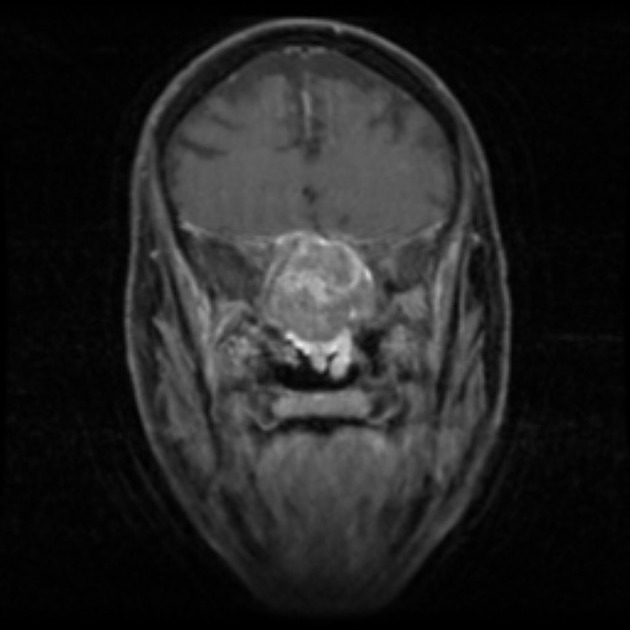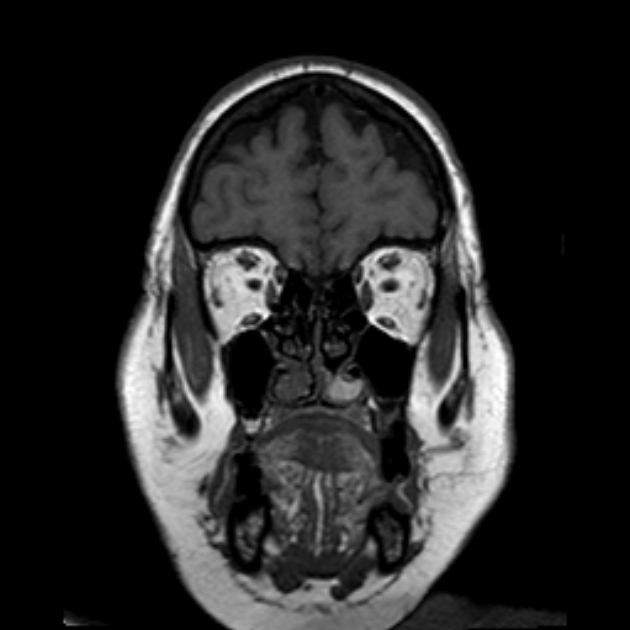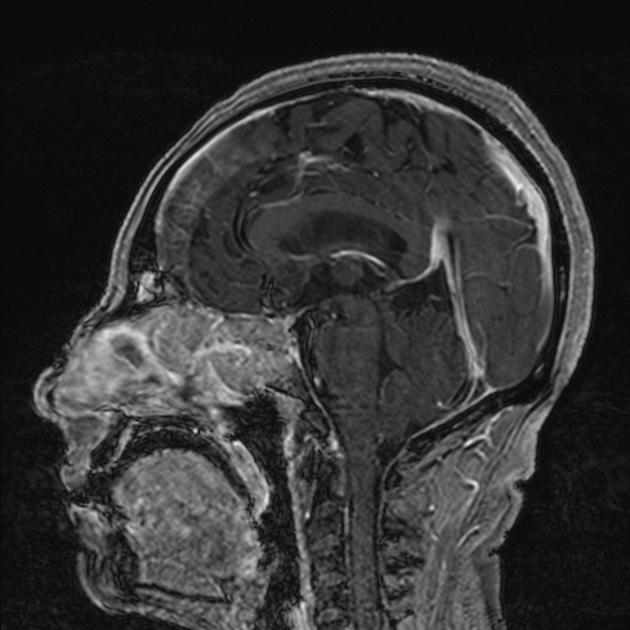Sinonasal mucosal melanoma (SNMM) is a very rare and unique subtype of malignant melanoma.
On this page:
Epidemiology
Sinonasal mucosal melanomas account for ~1% of malignant melanomas and <4% of head and neck cancers 1,2. They affect older patients (60-90 years old) 2. There is a higher incidence in Japan 5.
Clinical presentation
Headache and visual symptoms are common.
Pathology
A sinonasal mucosal melanoma is typically an expansile mass centered within the nasal cavity (more common) or the paranasal sinuses. Invasion is common, in particular to the orbits, base of the skull, intracranially, or nasopharynx. Hepatic metastases are common 4.
Radiographic features
Radiographic features of sinonasal mucosal melanomas are variable, especially on MRI, due to varying amounts of melanin, with up to one-third of cases being amelanotic 3.
CT
- polypoid or mass-like
- bony remodeling +/- erosion commonly present
- strongly contrast-enhancing 5
MRI
-
T1: homogeneous T1 signal
- high T1 signal may be seen secondary to hemorrhage or melanin 5
- T2: low signal
- T1 C+ (Gd): moderate homogeneous or heterogeneous enhancement
Metastases return the same signal characteristics as the primary lesion.
Treatment and prognosis
Mucosal melanoma of the head and neck, including sinonasal mucosal melanoma, is staged according to the American Joint Committee on Cancer TNM system.
Sinonasal mucosal melanoma is aggressive and carries a poor prognosis with a 5-year survival rate of ~30% 3.
Differential diagnosis
As a general differential in the sinonasal region consider other tumors such as:
As a broader differential in the nasopharyngeal region, consider other nasopharyngeal tumors such as:







 Unable to process the form. Check for errors and try again.
Unable to process the form. Check for errors and try again.